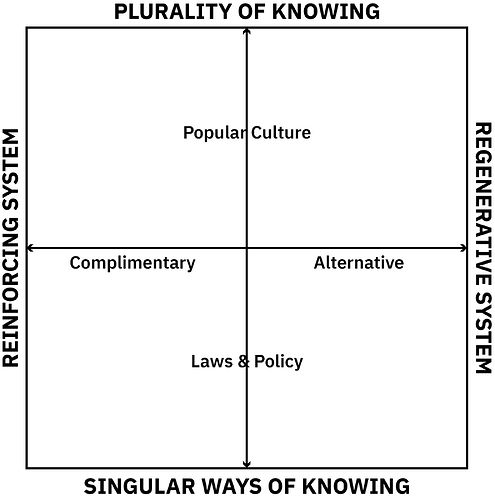3. Understanding the narrative space
Culture hacking is only for self-defense.
Narrative communities are dynamic and in movement. Be sensitive to understand the right moment to conduct a hack.
Narrative communities are groups of people talking to each other persistently about a specific thing over time. Map these communities and their underlying belief systems to inform our narrative strategy.
We can identify their justifications for action and guide our narrative intervention.
Identifying narrative communities
You will see narrative communities emerging from your data insights.
Name your narrative communities and provide a brief description. Analyze how they organize themselves and the potential they have to evolve the narrative space.
- nodes are talking to each other in an ongoing conversation.
- the conversation is about shared topics and events.
- actors have a shared perspective, belief system and ideology.
- they often have a shared geography.
- the language, concepts and terminology is shared.
- these communities are defined by the distance between them in the network which measures their level of interaction.
Cluster nodes by language, time, and power.
Analyzing narrative communities
- Attention: find the narrative communities that are bigger and have more interaction than others. Understand key features, themes and volume of activity. Show the most important events in the timeframe.
- Network: relationships between actors. How communities are related. Understand the virtual layer by their semantic and semiotic content.
- Power: map the political system by identifying dominant and less powerful narrative communities. Narrative communities that have the most attention and network interactions over time have the most power.
Creating maps is a political process in which we are enacting our worldviews, politics and belief systems.
Mapping narrative communities
System-knowledge framework. Mapping between ways of knowing and modes of being. Heterogeneous groups that are defined by their interaction with information and their relation to systems of oppression.
The system spectrum:
- communities that with their narratives and actions reinforce the current systems of domination.
- communities that are complimentary, akin to these systems of domination but do not completely reproduce them.
- communities that present alternatives to the systems of oppression.
- regenerative life affirming systems. Live-centric and actively dismantle systems of oppression.
The knowledge spectrum:
- a belief that there is one truth in the world.
- laws and policies, aims for incremental changes.
- popular culture, reproduce popular knowledge, not specialized but not heterogeneous.
- plurality of knowing in the service of life. Allowing diversity to flourish.
Identifying and analyzing frames
Frames are mental models that we use to interpret the world they serve as mental structures for unifying ideas and concepts made up of a mix of facts, experiences, emotions, memories, and assumptions.
We have frames for words, people and objects.
- what is inside the frame?
- what is outside the frame?
- how is what’s inside constructed?
what’s absent in the discourse often says more than what’s present, to elucidate metaphors, logics and power.
Linguistic analysis:
- verbs: what action is being represented? static, dynamic, fast, slow, serious, playful.
- hidden assumptions: what is represented as positive and negative? how can we tell? adjectives.
- imagery and metaphor: what images does the language conjure in mind?
- subjects and objects: who is active and who is passive? who is going the work? who has the power?
- power: is this conversation in a growing phase? does it exist and endure overtime? does it allow diversity? are nodes consistently engaged?
Identify metaphors and logics related to recurrent frames. Identify the overall power presence and potential for evolution.
Articulate your narrative objectives
What do you want to shift in this narrative related to your point of view?
